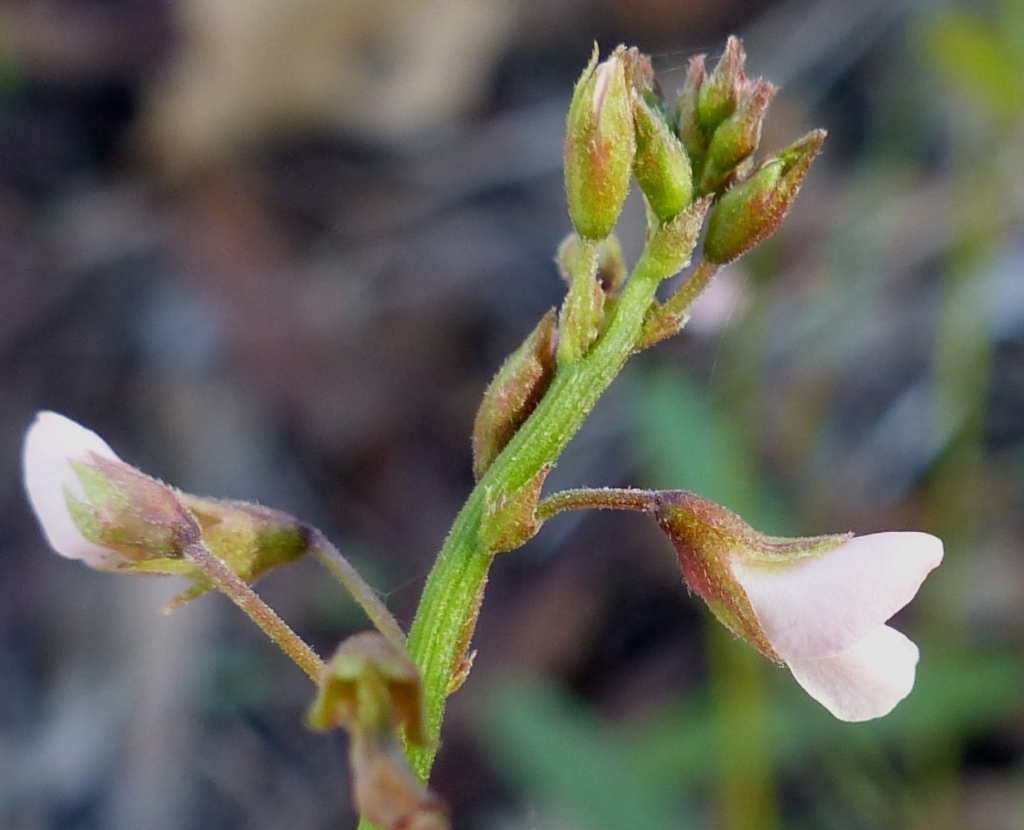Desmodium varians
(Labill.) Endl. Slender Tick-trefoilProstrate to ascending perennial herb; stems 15–50 cm long, glabrous or with a few short glandular and simple hairs. Leaves mostly trifoliolate, the petiolule of the central leaflet twice as long or more than those of lateral leaflets; leaflets usually strongly dimorphic, those of lower leaves broad-obovate to orbicular, 0.5–2.0 cm long, 5–20 mm wide, apices obtuse, those of upper leaves elliptic to narrow-elliptic, 1–4 cm long, 5–8 mm wide, apices acute (rarely leaflets obovate throughout); upper and lower surfaces glabrous to sparsely hairy; petiole 6–30 mm long; stipules c. 5 mm long; stipellae to 1.5 mm long. Racemes terminal, to c. 25 cm long, 4–60-flowered; pedicels 5–20 mm long. Flowers usually paired or in 3s; petals 4–5 mm long, pale pink, white or yellowish. Pod 7–20 mm long, constricted between articles from ventral side only, densely covered with minute uncinate hairs; articles 2–6, each 3–4 mm long. Flowers spring–autumn, also spasmodically in other seasons.
VVP, VRiv, MuF, GipP, WaP, Gold, CVU, NIS, EGL, EGU, HSF, HNF, OtR, Strz, MonT, VAlp. An uncommon species mostly from inland parts of eastern Victoria where found mainly in woodland and open-forest.
In the eastern part of its range, plants are normally non-twining, and often rather stiff-stemmed and the leaves tend to be strongly dimorphic, with those associated with flowering stems narrow-elliptic to nearly linear, often >20 mm long, with basal leaves obovate or broadly elliptic. West of Melbourne (where the species is uncommon), plants are commonly loosely mat-forming and sometimes twining (as in D. gunnii) and the leaves are less pronouncedly dimorphic, most being relatively broad and rarely more than 20 mm long.
Jeanes, J.A. (1996). Fabaceae. In: Walsh, N.G.; Entwisle, T.J., Flora of Victoria Vol. 3, Dicotyledons Winteraceae to Myrtaceae, pp. 663–829. Inkata Press, Melbourne.
 Spinning
Spinning
